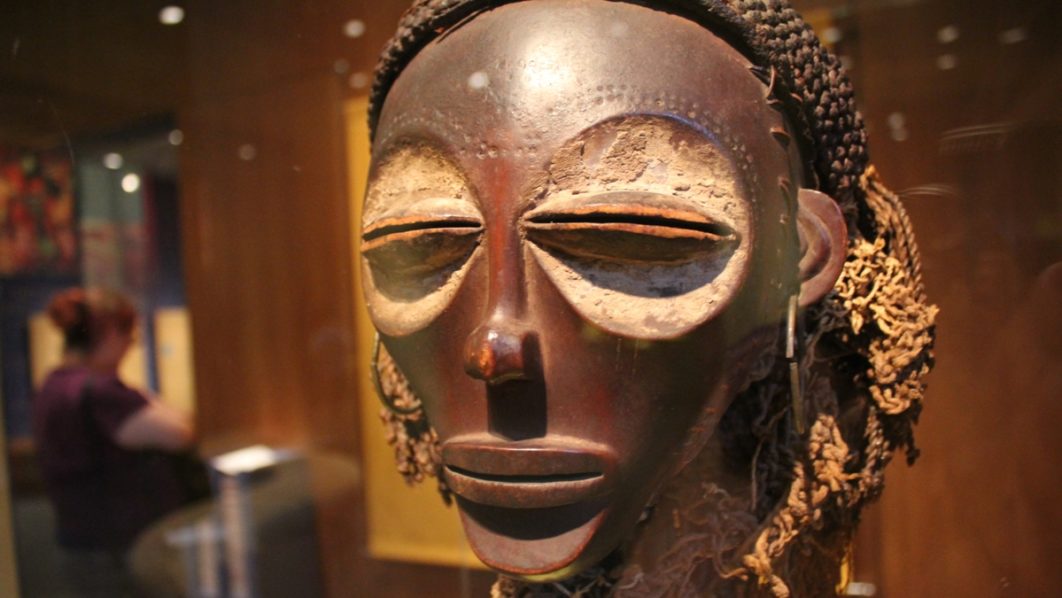Name: The Congolese Chokwe Mask
History: Chokwe origin can perhaps be traced to the Mbuti Pygmies and Mbundu between 1600 and 1850.
This powerful and important Congolese chokwe mask (also known as Chikunga) represents a beautiful young woman adorned with tattoos, earrings, and an elaborate coiffure. The original chokwe name referred to an adult woman who had given birth.
According to Chokwe belief, ancestral spirits play a very important role in providing for the living descendants, and also they protect the people from evil, supernatural elements, and intruders. The artist carved this mask from wood Alstonia, with very subtle, even thin walls. The surface of the mask is a rich, reddish-brown color which was probably obtained from a mixture of red clay and oil, and has a sign of a long nose, with a beautiful patina. There is white clay (kaolin) covering the half-closed eyes placed in large, concave sockets.
The eyes, nose, mouth, and hemispherical ears are subtly carved on a face outlined by a softly modeled forehead and concave chin.
Uses: In the past, this mask played a significant role in religious beliefs and institutional practices. Among other uses of the Congolese chokwe mask was for entertainment purposes.
The scared mask is generally used during investiture ceremonies of a chief and sacrifices to the ancestors. The chief of the group can only wear the mask. The Nomadic actors wearing these masks travel from village to village, living on gifts received at performances.
A male dancer is dressed as a woman in a costume of braided fiber that completely covers his body and hides his identity. The dancer wears a loincloth, carries a fan, and moves in slow, precise steps to emulate a woman. When the mask becomes unusable, it is discarded. When a masquerader dies, the mask is buried with the dancer.
For more info, visit: https://africa.uima.uiowa.edu/peoples/show/Chokwe
